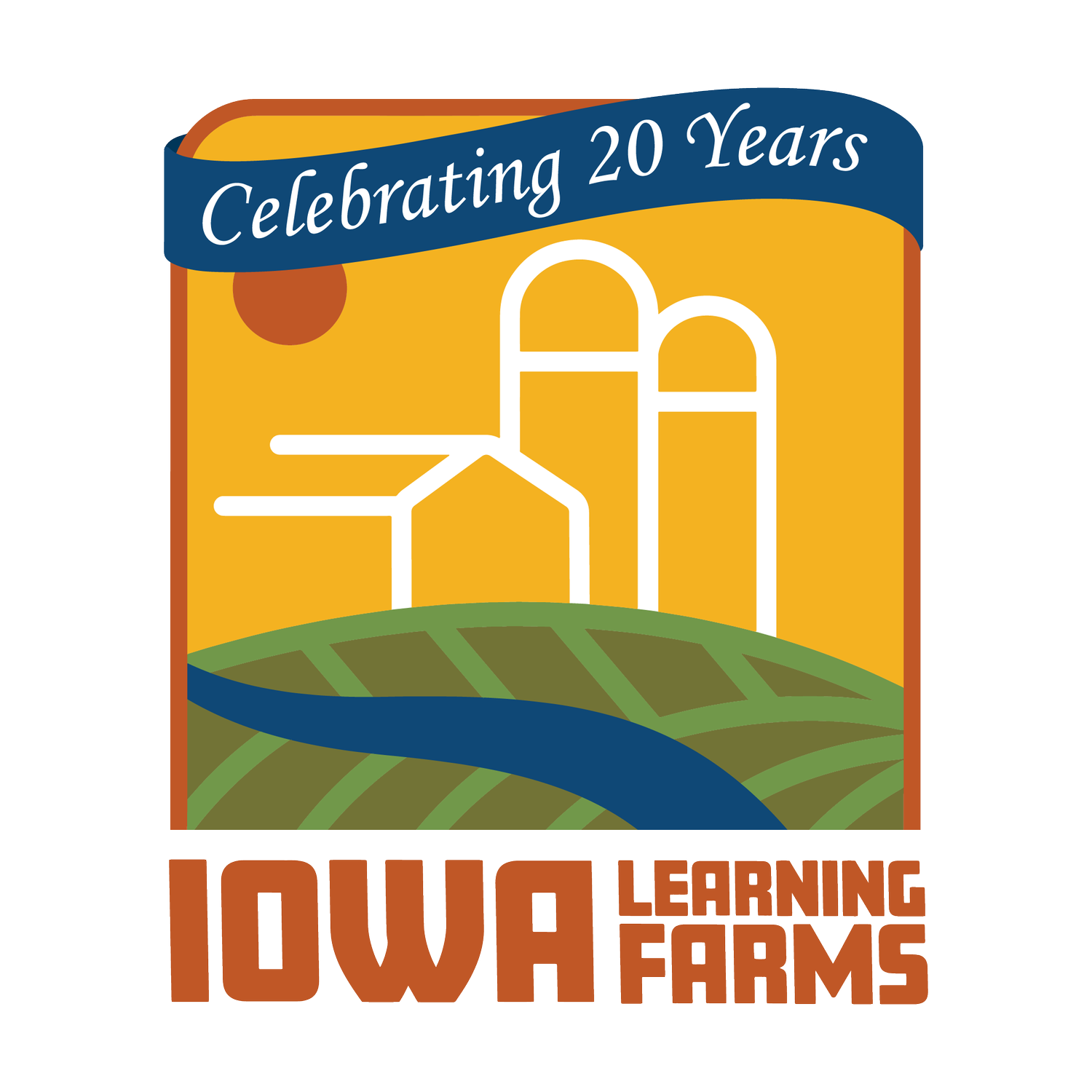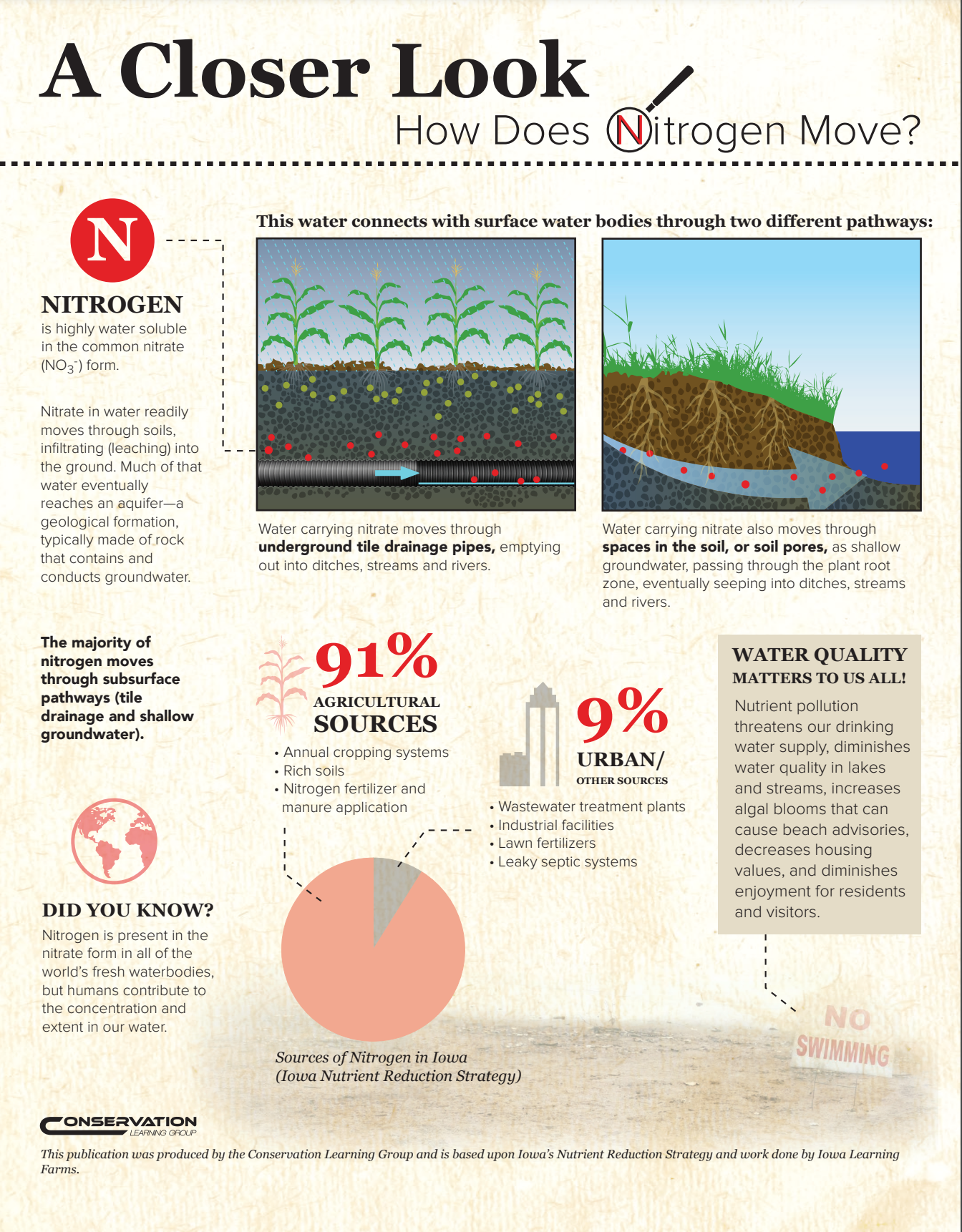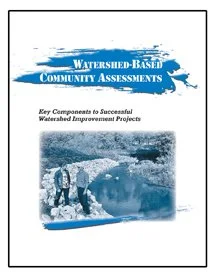What is redefining the field edge?
A land-use-change concept that alters a field’s cropping boundaries, converting some parts of the field to perennial prairie vegetation.
This publication provides best management recommendations for farmers and landowners getting started with conservation and water quality practices by helping select and incorporate in-field and edge-of-field conservation practices most appropriate to the decision maker's land and preferences.
Read MoreWater Quality Matters To Us All provides insight into the attitudes and practices of agencies and stakeholders involved in protecting Iowa's water quality. Based on listening sessions between 2008-2011 with farmers, urban residents, Soil and Water Conservation District commissioners, and field staff from Natural Resources Conservation Service and the Iowa Department of Natural Resources, the book details the institutional, community, and individual impediments towards water conservation and curtailing nonpoint source pollution.
Read MoreWhere does your drinking water come from? Two new infographics from the Conservation Learning Group take a closer look at that question and how nitrogen and phosphorus move on our landscape.
Read MoreThis illustration shows the relative stream delivery of nitrogen and phosphorus from each source, with the arrows sized proportionally.
Read MoreNearly 75% of Iowa’s landscape is farmland. Land management and conservation practices utilized by farmers and landowners play a key role in improving water quality by reducing loss of nutrients to waterways.
Read MoreNot all algae are harmful, but the most common harmful algal blooms in Iowa are comprised of blue-green algae—also known as cyanobacteria. Learn more in this infographic.
Read MoreThe Iowa Nutrient Reduction Strategy is focused on reducing nitrogen and phosphorus in Iowa waters. Farmers, landowners, municipalities, agencies, conservation organizations and everyday Iowans are collaborating to make changes to help meet nutrient reduction goals. This publication addresses some frequently asked questions regarding the Iowa Nutrient Reduction Strategy.
Read MoreNutrient pollution threatens our drinking water supply, diminishes water quality in lakes and streams, increases algal blooms that can cause beach advisories, decreases housing values, and diminishes enjoyment for residents and visitors. Learn more about the Iowa Nutrient Reduction Strategy efforts to improve water quality in Iowa.
Read MoreAssessing your watershed community's strengths and weaknesses is an important first step in planning and implementing an effective watershed improvement project. Without citizen "buy-in" to your watershed plan, it doesn't matter how much funding or technical support you may have, your project will not be successful. The toolkit can be downloaded by section in order to personalize your watershed's plan.
Read MoreView the Iowa Learning Farms video The Work of Our Hands (9:45) which discusses the relationship of societies and agriculture, historically and today.
Read MoreIowa’s fertile soil has helped the state become a global agricultural leader. However, that same soil and the fertilizers used to boost crop production contribute to water quality challenges when nitrogen and phosphorus leave through drainage, runoff and erosion. The Iowa Nutrient Reduction Strategy set statewide goals for reducing nutrient losses through a variety of practices.
Read MoreDownloadable recipes for going from soybeans to corn, and from corn to soybeans using cover crops.
Read More






















